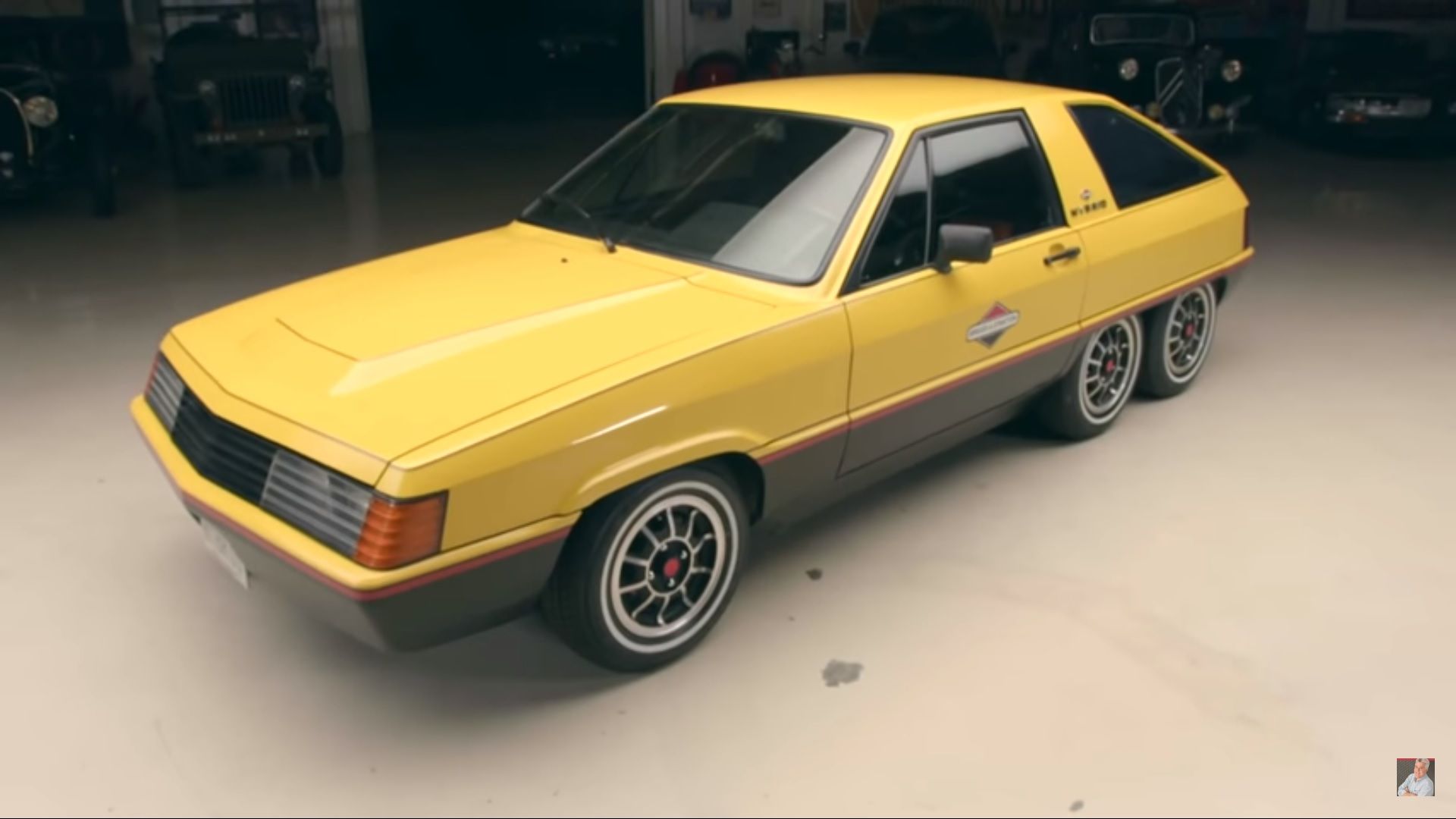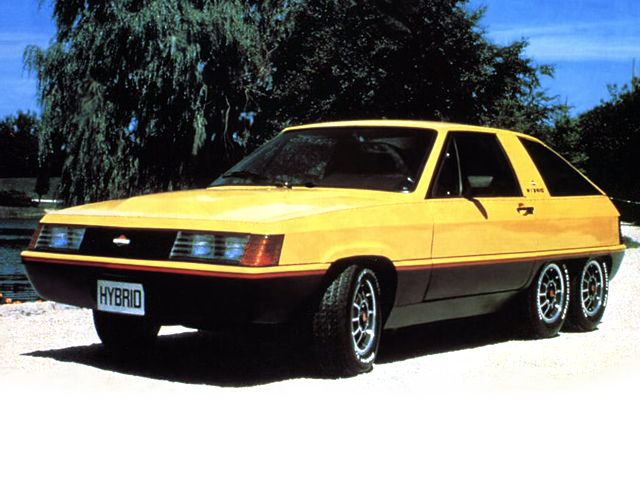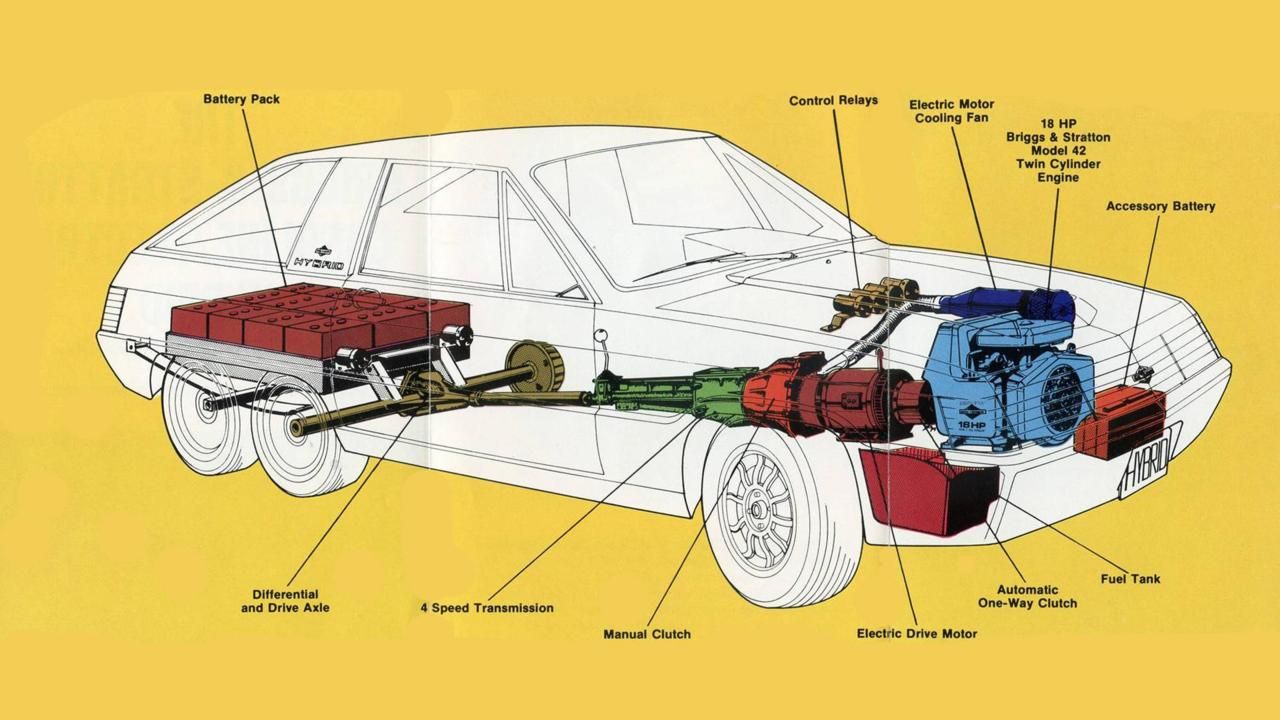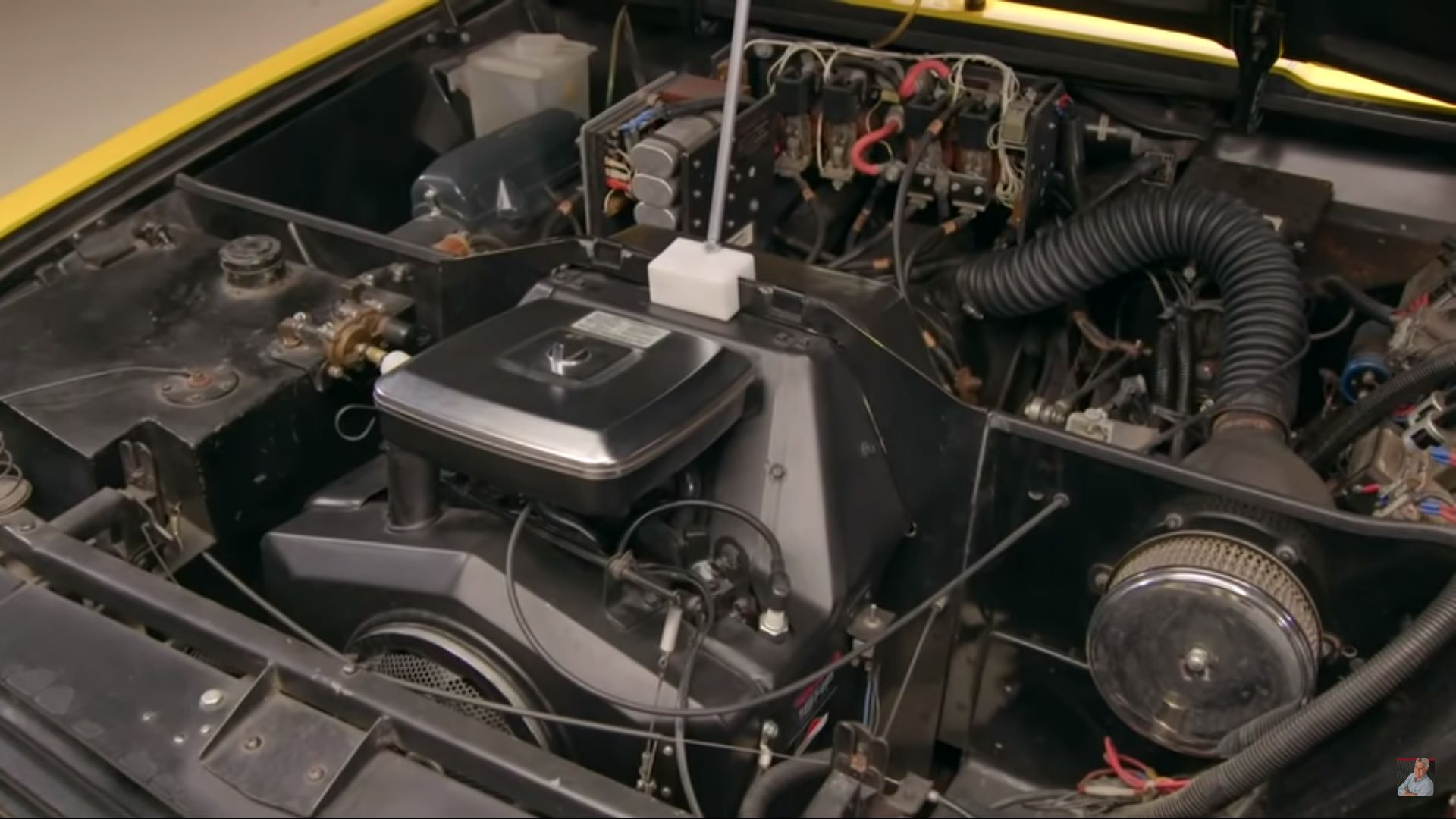The trend that had non-car manufacturers taking a stab at building a car is not a modern affair. Way before Apple was reportedly working on Project Titan or vacuum maker Dyson laid out plans to build an all-electric hypercar or Sony unveiled the Vision-S concept, Briggs and Stratton, a company known for its lawnmower engines and washing machines had a stab at building a car that used both electricity and internal combustion power to get around.
It was called the Hybrid prototype and came as an answer to the 1970s gas crisis as well as an attempt to move away from fossil fuels – at least partially. Oh, and it also sat on six wheels and had a full-fiberglass body.
What is the Briggs and Stratton Hybrid?
The short answer to that question would be a six-wheeled hybrid. It’s the longer answer, however, that reveals the concept car’s intricacies.
For starters, one could argue that the Briggs and Stratton Hybrid was a collective effort. Indeed, the Hybrid’s internal combustion engine was one of the company’s very own off-the-shelf products: a 0.7-liter (42 cubic inches), Model 42 twin-cylinder unit. The mill churned out a puny 18 horsepower and was complemented by an electric motor good for eight horsepower.
Mind you, the second rear axle wasn’t there for added off-road prowess. Instead, its purpose was to take some weight off the other two axles, given that the lead-acid car batteries (a dozen of them) and the incorporated trailer that housed them tipped the scales at around 1,000 pounds (roughly 454 kilograms). So instead of four overloaded tires, the Hybrid split its weight between three axles and six wheels.
Needless to say, the Briggs and Stratton Hybrid was a slug. According to BBC Autos quoting Motor Trend’s March 1980 issue, the Hybrid’s top speed was 55 mph (88.5 kph). This meant that it was impossible to try out its 0-60 mph (96 kph) time, although Motor Trend’s editors managed to reach 50 mph (80 kph) from a standstill in 34.35 seconds in hybrid mode. In pure-electric mode, the Hybrid would need 45 seconds to clear the 0-50 interval. Range in pure EV mode was around 60 miles (97 kilometers), while charging the battery took eight hours when connected to a 110-volt household outlet.
What’s more, the driver needed to manually change gears and select the driving mode he thought was fit in a given situation, since Briggs and Stratton never fitted the Hybrid with computer-controlled systems.
What about the Briggs and Stratton Hybrid’s design?
The Hybrid was penned by none other than American industrial designer Brooks Stevens, who is also credited for the Jeep Wagoneer, Oscar Mayer Wienermobile, and Harley Davidson’s Hydra-Glide with the trademark suspension forks in the front and streamlined body. By the way, every Harley motorbike built afterwards is based more or less on Stevens’ designs, including today’s lineup.
As we mentioned above, the Hybrid’s body panels were all fiberglass, purpose-built in an attempt to compensate for the heavy battery ensemble. The doors and windshield, however, came from the first-gen Volkswagen Scirocco. The first rear axle was also the drive axle and it was home to a differential. Power reached it through a four-speed transmission mounted behind the front axle, while the electric motor sat between the transmission and the internal combustion engine.
Now go check out Jay Leno's video below, because it's filled with even more Briggs and Stratton Hybrid-related goodies.
BRIGGS AND STRATTON HYBRID SPECS
|
Engine |
air cooled, horizontally-opposed 2-cylinder |
|---|---|
|
Power |
18 hp @ 3,600 rpm |
|
Fuel capacity |
7 gal |
|
Electric motor |
Baldor series, DC |
|
Power |
8 hp continuous, 20 hp intermittent |
|
Length |
174 in |
|
Width |
64 in |
|
Height |
50 in |
|
Weight |
3,200 lb |
|
Wheelbase |
86 in to 1st rear axle, 112 in to 2nd rear axle |
|
Ground clearance |
6.5 in |
|
Battery pack |
12 6-volt lead-acid batteries |
|
Capacity |
250 Ah |




